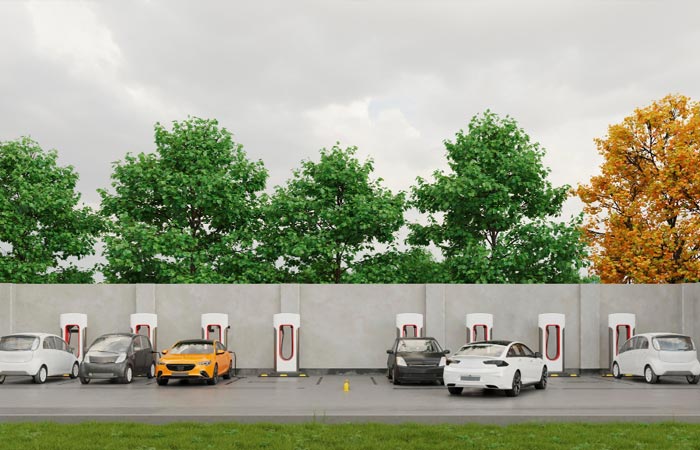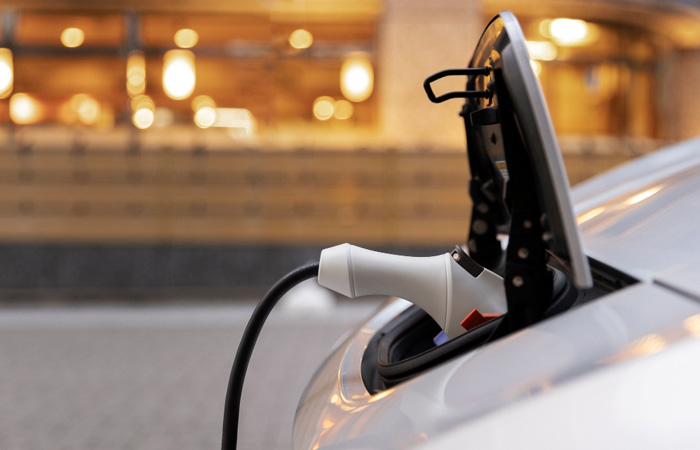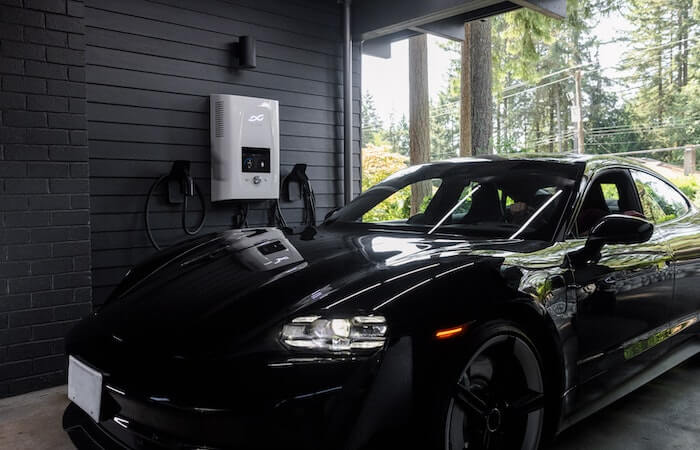Electric vehicle batteries can find a second life when they no longer have enough capacity to power an EV. Electric car battery life can be extended by repurposing in a residential battery storage system, storing energy to be used later. This storage technology benefits households and other buildings as it helps provide reliable, efficient, and cost-effective access to electricity.

Electric Car Battery Life: Renewable Energy
Harnessing renewable energy sources, such as solar and wind, to power your residence can be a great way to reduce bills and lower the energy you use from the grid. Pairing an EV battery with renewable energy output reserves enough electricity for use throughout the night when wind and sunlight are reduced.
The Manufacturers
Electric car batteries are a reliable and well-tested technology, with EV manufacturers providing extensive guarantees to prove it. For instance, Nissan offers a comprehensive eight-year or 100,000-mile warranty on their vehicle’s batteries, while Tesla provides an equivalent assurance. Additionally, many third-party studies have shown that electric car batteries can last consistently for at least a decade, potentially longer.
The modern-day lithium-ion battery that powers mobile phones lasts through hundreds of charge cycles – complete charging and discharging – before it begins to experience a decline in performance. Over time, the lithium-ion battery will start to lose its capacity to store charge, leading to shorter operating times. This appears after as few as 500 cycles, depending on the battery’s type and use. It can take up to one or two years for a lithium-ion battery to experience this decline in performance.
Electric car batteries last significantly longer than those found in a typical phone. To achieve this, EV manufacturers incorporate a ‘buffering’ system. This limits the amount of available power while still allowing for optimal performance. Lifespan is prolonged because the instances of battery discharge and recharge are reduced. Additionally, EVs often have sophisticated cooling systems that protect the battery from wear and tear. Through these methods, electric vehicle batteries can often last for many years with minimal maintenance required. This ensures drivers can be confident in an EV’s reliable performance over thousands of miles.
The Eventual Decline
As electric vehicles age, the battery capacity gradually decreases due to repeated cycles of discharging and recharging. To counteract this gradual degradation, manufacturers typically designate additional spare capacity for each vehicle battery. As the battery ages, it uses this extra capacity to maintain the same vehicle range throughout its life. However, once the battery capacity falls below 80%, drivers may notice a reduction in the range and performance of their electric vehicles.
The Key to Extending Electric Car Battery Life
Regular maintenance is the key to maintaining electric car battery life. This includes regularly checking for signs of wear and tear, periodically replacing parts, and properly caring for the battery by avoiding overcharging or discharging it. Additionally, drivers should be aware of how they use their electric vehicles, as aggressive driving can decrease the battery’s life span and cause it to degrade faster than normal. With proper maintenance, an electric vehicle battery should last around 8-10 years or 200,000 km before replacement.
Electric Car Battery Life: In A Nutshell
Maintaining the reliable performance of an electric vehicle battery is possible with proper maintenance and regular care. With advances in technology, electric car batteries can now last for many years and provide drivers with a cost-effective way to power their homes while reducing their carbon footprint. Thus, investing in an EV could be a worthwhile decision that pays off both financially and environmentally in the long term.









